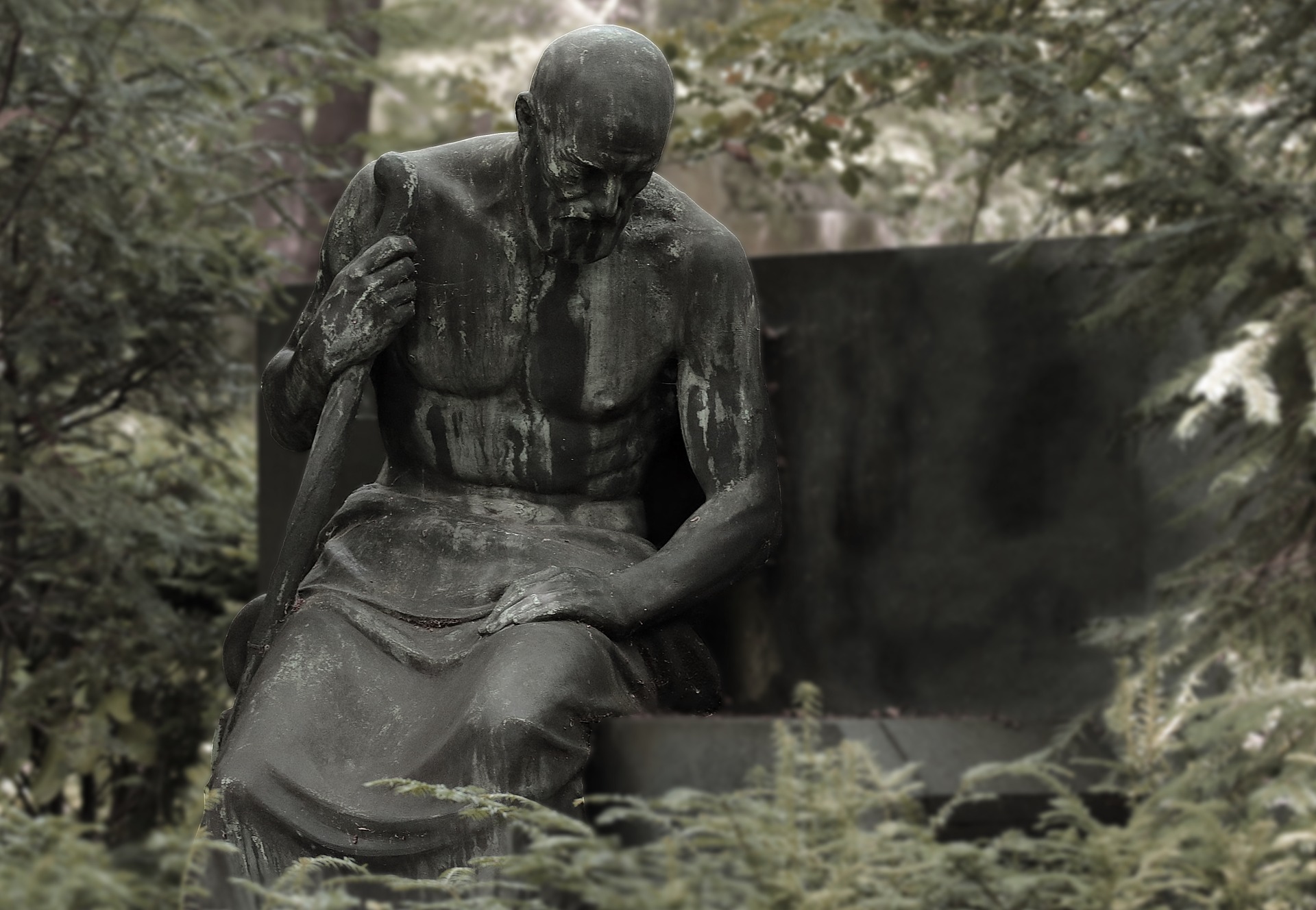 Submitted by Dr. Dave on
Submitted by Dr. Dave on

Some interesting research and thoughts of Past Life Therapy, memory processes and transition.
*****
Every past life we have had ended in death. Each death is a decisive transition stage for the soul. In therapy, this is where the most crucial part of the healing begins -- finishing the unfinished business. Since we know that consciousness survives death, it is possible to follow it in PLT (Past Life Therapy) through the death process into the afterlife. Deep Memory Process work in this area, is based loosely on the Tibetan Buddhist understanding of the Bardos. I use the terms Bardo, spirit world, and afterlife to mean the same thing. The Bardo is a transitional state; the term is most commonly used for the state after death and before reincarnation although in the Buddhist view all states of existence are Bardo states. The Bardo of dying is the transitional plane between life and death, when the elements of the body are breaking down. Traditionally a Lama or priest would read the Bardo Thotrol or Thodol (The Tibetan Book of the Dead) to the dying or recently deceased person. It tells them not to fear death, and explains to them the experiences they will have on the other side so that they can safely navigate through these planes. It warns that once awareness is no longer in a body it will continue to create a reality in the afterlife. The person is urged to turn from the living, to die with peace of mind and heart so that they do not go further into the lower Bardos, and attachments are not recreated and experienced as reality on the other side.
The Tibetans describe the light that is perceived immediately after death, and say we must recognize this light as our own true "Buddha nature" to merge with it. But they also warn there are other lights, one is the light of your own individuated mind. If you fail to see through the illusions and merge with the true light, you will journey further into the lower Bardos which eventually lead to rebirth. Many souls obviously do not achieve this recognition upon dying. They bathe temporarily in the light, or miss it altogether, and the weight of the unresolved issues causes them to wander confused, getting lost in the lower Bardos where "karmic gravity" pulls them back into incarnation. Yes, that's why we are all here! Some confusion as to what the afterlife of the soul is like exists today because of the information that is gathered from Near Death Experiences. Many NDE cases document going into a supernal light (although some do describe hellish states as well); meeting loved ones or higher beings, and then being directed or feeling pulled back into their body on the earth plane. Because this is not a full death experience, it is possibly, only this first stage of the Bardo that is temporarily encountered. This can lead to the misconception that we all go "to the light" after death and remain there. With NDE, the death process and entry into the Bardos can be like visiting a place as opposed to moving there permanently. When you visit somewhere it can be fresh and exciting, you may think "Gee this would be a great place to live." When you finally move to that place a different reality sets in. There may be difficulties and complications that arise that never experienced when just visiting there.
In working with many cases over the years it is apparent to me that it is only a part of the soul that remains in the lower Bardos. I think of these parts of the soul as "split-off psychological complexes" frozen in time. This is the fragmenting effect that trauma has on the psyche. In Shamanic terms this is a soul fragment that is split off and stuck in a kind of tape loop, replaying its worries, fears, and unresolved complexes. It is not the entire energy of the soul, but is an earthbound fragment. Thus, a dying thought of "I can't leave them" may play over and over immediately after death at such an increased rate that it fixes the attention of the newly departed soul on the earth plane, causing it to miss its opportunity to fully ascend to higher planes. Such a dying thought can take over the awareness of the departing consciousness, causing it to remain partially earthbound, obsessively focused on its single objective. Consciousness not anchored in physical matter creates reality faster than the speed of light. Songyol Rimpoche writes in the Tibetan Book of Living and Dying that once awareness or mind is free of the body at death, it vibrates hundreds of times faster. Thus thought manifests instantly in the Bardo, much like it does in our dream states. We create our reality in the afterlife instantaneously.
Buddhism and other traditions such as Hinduism teach that one of the main objectives of life is to be able to die well, thus to achieve eternal freedom from the earth plane or cycle of rebirth. Traditions that have a place for reincarnation in their beliefs all have similar teachings -- it is of utmost importance to the evolutionary well being of the soul to die as consciously and untroubled as possible. They explain that the intensity and weight of unfinished desires, emotions, and thoughts in life slow and even retard the soul's progress after death, like taking too much baggage with you on a long journey. Thus they teach that by limiting desires and purifying thoughts and emotions during life, the afterlife passage to higher planes will be easier to complete. It also is taught that meditation on or invocation of the divine or a divine being at the moment of death, as a continuation of a lifelong spiritual practice, will also result in clear passage through the Bardos. Unfortunately, uttering "Oh My God" at that last moment doesn't seem to work!!
Anyone who works in the style of PLT that follows the consciousness into the afterlife, will report that many do not perceive the light after death. They are still caught in their emotions and dying thoughts, they are still looking for their loved ones, or they are still angry at the ones who killed them. There are so many variations of the kinds of imprints held at death. That is why in PLT, the state of mind and emotions at death are most important to capture and bring to consciousness because these lead to the lost parts of the soul. A main principle of the Bardos is that recognition and liberation are instantaneous. In other words, we only need to see beyond the illusion to be liberated from it. This is useful to know when working with past life characters that are stuck after death. Often the work that happens in the Bardo involves getting the soul to give up its obsessive thoughts and leave its complexes behind. You will see in the case studies the different kinds of resolution that happen in these Bardo states. They can include the healing of physical traumas carried in the subtle body, reunion with lost loved ones, dialogue with perpetrators, seeking forgiveness from those one has hurt; the finishing of unfinished desires/impulses, or just having a good old catharsis. The reworking of all these imprints in the Bardo, allows this part of the soul to complete its unfinished business and more fully ascend to higher planes.
Once resolution happens in the lower Bardos, it is as if the consciousness becomes lighter. It is possible then to ascend to the higher Bardos and this often happens spontaneously. These realms are more like the natural domain of spirit that is unfettered by earthly existence. This is the original light the Tibetans describe that consists of unconditional love and grace. Wise beings and images of the divine are often met here. It is a place of clear, pure supernal light where overview of the past life happens; inspired connections to current life people and places are made, or whole patterns of past lives and the reason for them are revealed, often spontaneously and without direction. It is the place of higher view. Communication here is often direct and intuitive without words. Questions are answered by higher beings concerning the meaning and lessons of the life that was just re-experienced. Often new current life directions and potentials are pointed out. The soul fragment that is resurrected and brought to this plane is often overjoyed to finally come to this place of peace.
After bringing the client fully back into present day consciousness, we work together to recap how this experience fits into the current life context. Often further insight happens this way, but in the following hours and days after a session, clients often report that the insights occur like dominoes falling into one another, as they go about their day to day business. After time, the changes that have occurred as a result of the session also become more noticeable, so in some of the cases in this book, the afterthoughts of clients are included.
The stages that occur in regression illuminate much about the psychology of the soul. Even though a lifetime may be in the distant past, it can be very present in the current life psyche. These circumstances from the past shape who we are today. The past and the future are tied together by the present, and the choices we make now affect both. Self knowledge of where we have been, and resolution of any limitations from the past allows us greater freedom in the present and subsequently the future.
Excerpt from Understanding Karmic Complexes : Evolutionary Astrology and Regression Therapy (The Wessex Astrologer, UK 2009) by Patricia L. Walsh
- 1730 reads